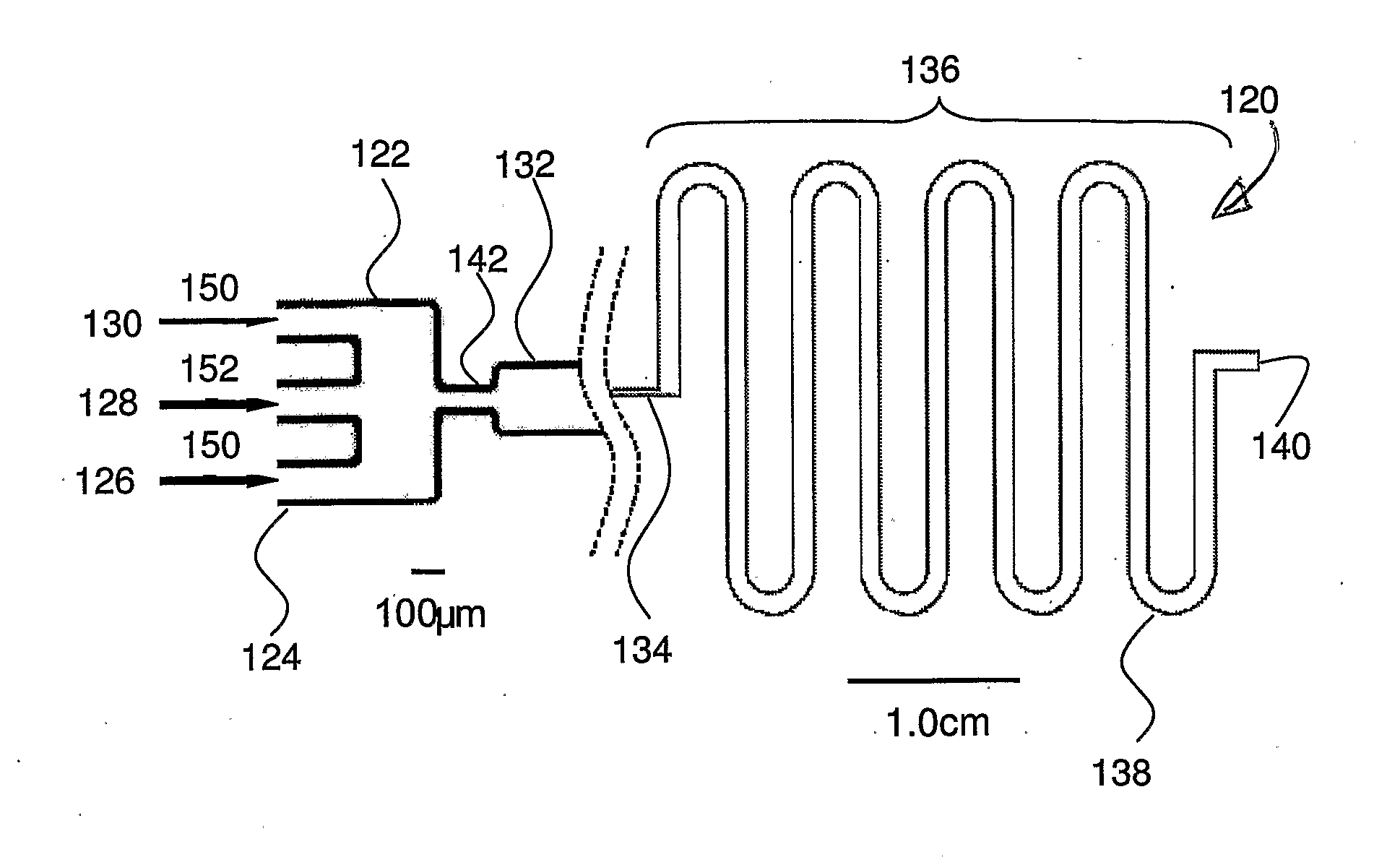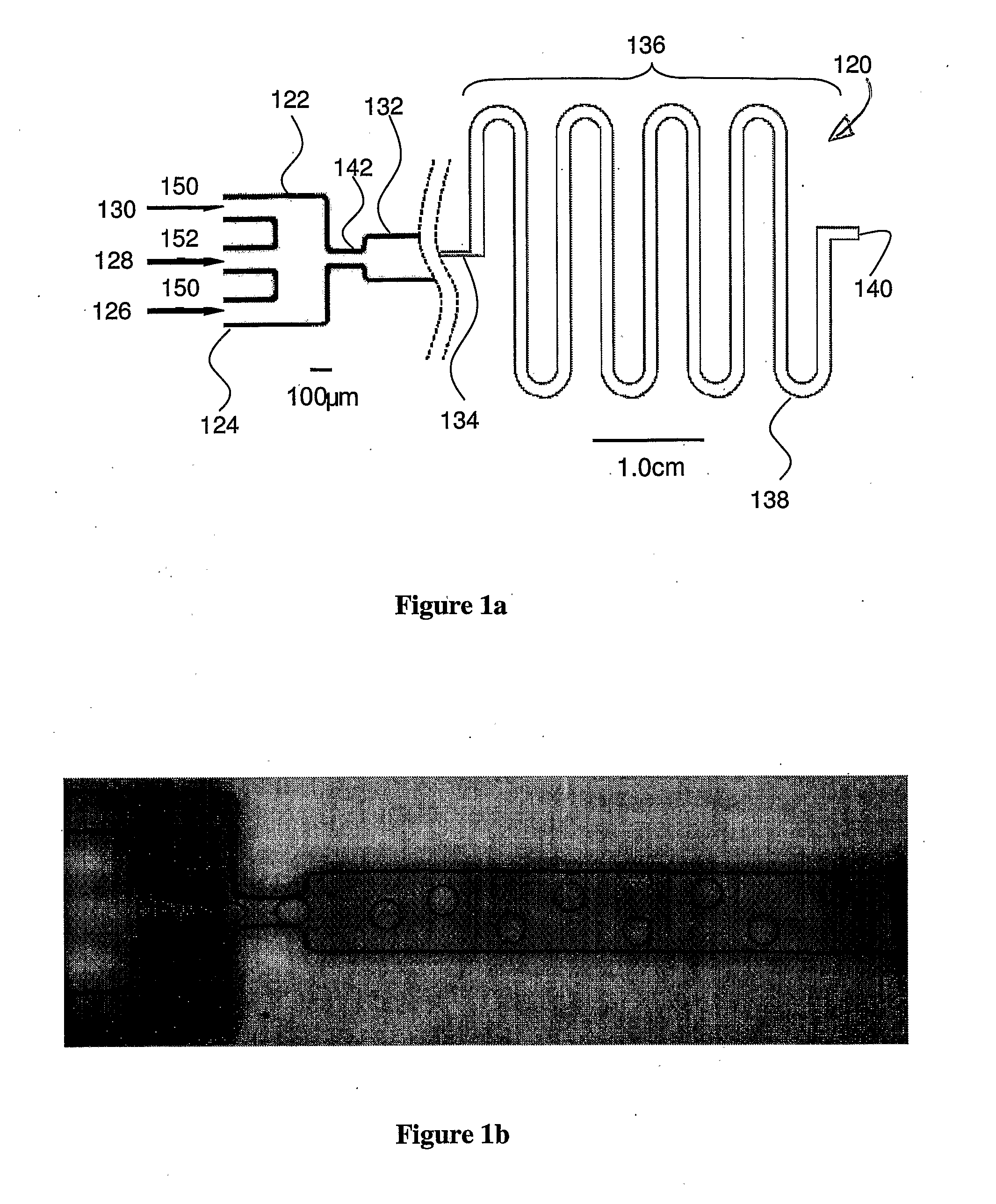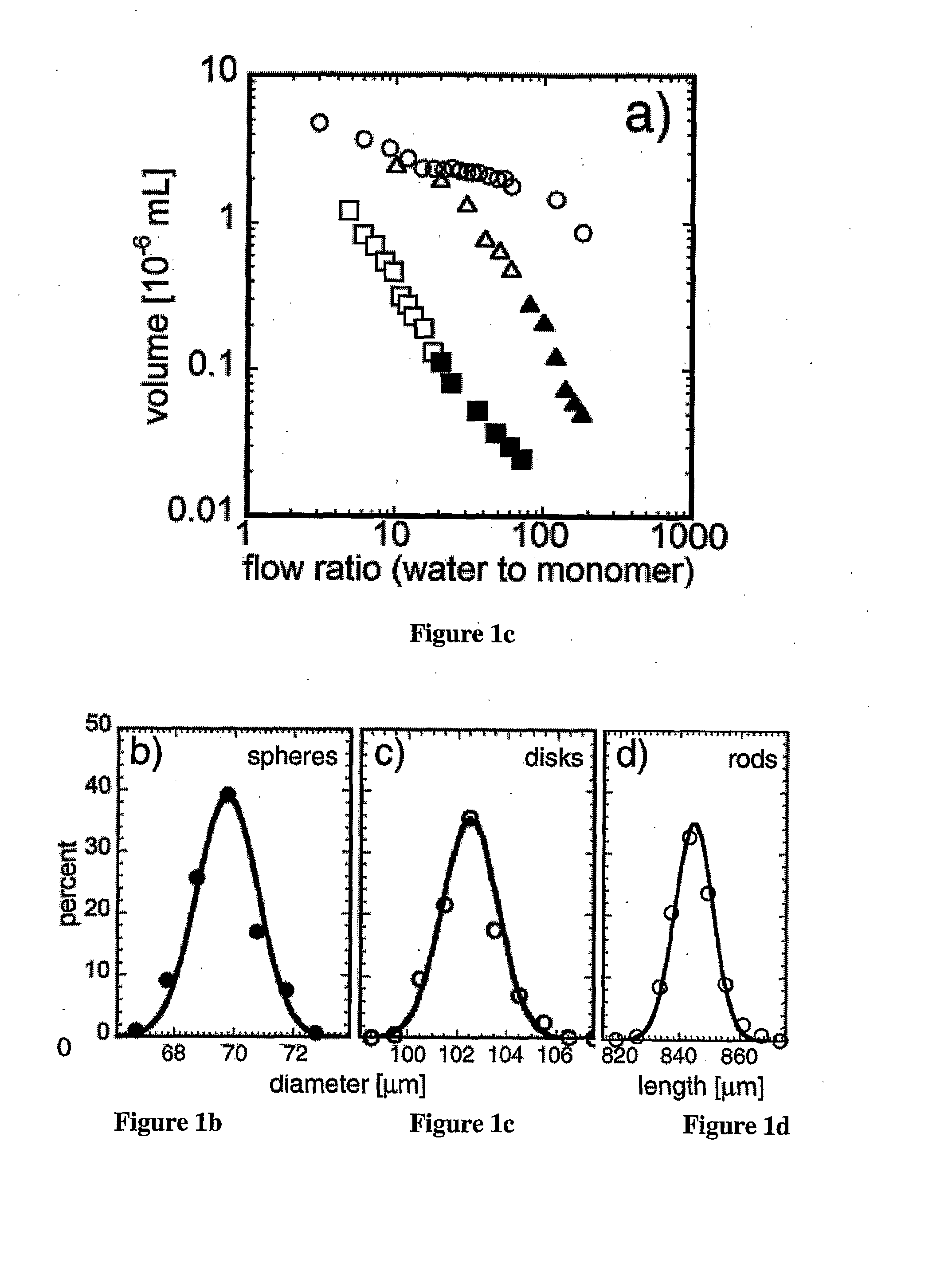Method of Producing Polymeric Particles With Selected Size, Shape, Morphology and Composition
a polymerization and particle technology, applied in the direction of mixers, immunoassays, mixing, etc., can solve the problems of narrow size distribution of large particles, insufficient size distribution of resulting particles, and general limitation of the control of microbead shapes in conventional polymerization reactions, and achieve the effect of long residence tim
- Summary
- Abstract
- Description
- Claims
- Application Information
AI Technical Summary
Benefits of technology
Problems solved by technology
Method used
Image
Examples
example 1
[0151]Poly[tri(propylene glycol diacrylate)] microparticles were obtained in the microfluidic reactor with a design FIG. 1a with height 92 μm, orifice width 60 μm and the width of wavy channel 160 μm. An aqueous solution of 2 wt % sodium dodecylsulfate (SDS) was injected into the outer channels at a flow rate 2.0 mL / hr. The monomer tri(propylene glycol) diacrylate containing 4 wt % of photoinitiator 1-hydroxycyclohexyl phenyl ketone (HCPK) was injected at a flow rate 0.12 mL / hr into central channel. Following the formation of droplets the monomers were polymerized by exposing them to UV irradiation. The particle average size was 76 μm, and the polydispersity was 3%.
example 2
[0152]Polymer polyTPGDA microrods were obtained in the microfluidic reactor with a design shown in FIG. 1a with height 92 μm, orifice width 60 μm and the width of wavy channel 160 μm. An aqueous solution of 2 wt % sodium dodecylsulfate (SDS) was injected into the outer channels at a flow rate 1.0 mL / hr. The monomer tri(propylene glycol) diacrylate containing 4 wt % of photoinitiator 1-hydroxycyclohexyl phenyl ketone (HCPK) was injected at a flow rate 0.40 mL / hr into central channel. Following the formation of droplets the monomers were polymerized by exposing them to UV-irradiation. The rods had an average length of 745 μm and an average width of 150 μm.
example 3
[0153]Alginate microgels were obtained in the microfluidic reactor with a design shown in FIG. 16. The width of the outer and intermediate channels Wc was 145 μm, width of the central channel Wm is 50 μm. The width of orifice Wo was from 50 μm. The width of the downstream channel Wd varied from 600 μm. The widths WL1 and WL2 are 50 μm. An aqueous solution of alginate with the concentration from 0.1 wt % was introduced in the central microchannel (Fluid A, FIG. 16). An aqueous solution of the crosslinking agent calcium chloride with the concentration from 0.0.08 wt % was introduced in the two intermediate channels (Fluid B, FIG. 16). A mineral oil was introduced in the two outer channels (Fluid C, FIG. 16). The flow rates of alginate solution was 0.4 mL / hr, the flow rate of the solution of CaCl2 is 0.2 mL / hr, the flow rate of the mineral oil is 2.2 mL / hr. The solutions of a biopolymer and of a crosslinking agent were mixed at the exit of the inner and intermediate channels and sheare...
PUM
| Property | Measurement | Unit |
|---|---|---|
| Length | aaaaa | aaaaa |
| Fraction | aaaaa | aaaaa |
| Fraction | aaaaa | aaaaa |
Abstract
Description
Claims
Application Information
 Login to View More
Login to View More - R&D
- Intellectual Property
- Life Sciences
- Materials
- Tech Scout
- Unparalleled Data Quality
- Higher Quality Content
- 60% Fewer Hallucinations
Browse by: Latest US Patents, China's latest patents, Technical Efficacy Thesaurus, Application Domain, Technology Topic, Popular Technical Reports.
© 2025 PatSnap. All rights reserved.Legal|Privacy policy|Modern Slavery Act Transparency Statement|Sitemap|About US| Contact US: help@patsnap.com



